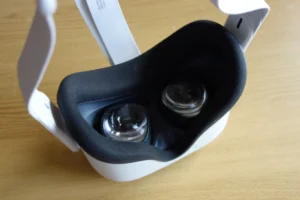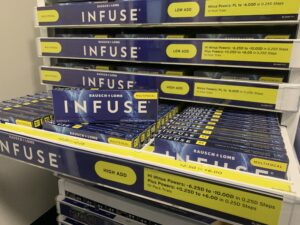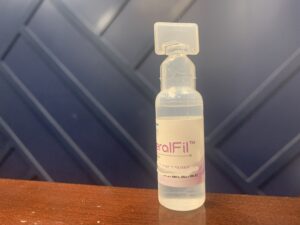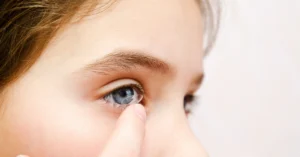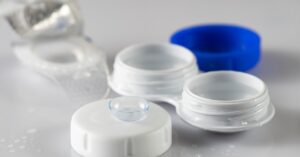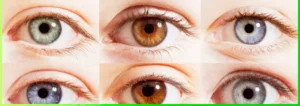Understanding Dry Eyes | Ideal Eye Compress
Dry eyes can be a bothersome condition that affects many individuals. It occurs when the eyes do not produce enough tears or when the tears evaporate too quickly, leading to discomfort and irritation. Understanding the ideal eye compress, its cures, and the tips for dry eyes is essential for managing this. Additionally, using an eye compress can play a crucial role in providing relief and improving the overall well-being of individuals with dry eyes.
Causes and Symptoms of Dry Eyes
Dry eyes can have various causes, including:
- Aging: As we age, tear production decreases, leading to a higher risk of developing dry eyes.
- Environmental factors: Dry or windy climates, air conditioning, and indoor heating can contribute to dry eyes.
- Medical conditions: Conditions such as diabetes, rheumatoid arthritis, and thyroid disorders can be associated with dry eyes.
- Medications: Certain medications, such as antihistamines, decongestants, and antidepressants, can reduce tear production.
- Screen time: Prolonged use of digital devices can cause eye strain and contribute to dry eyes.
Individuals with dry eyes may experience the following symptoms:
- Dryness: A persistent feeling of dryness or grittiness in the eyes.
- Redness: The eyes may appear red or bloodshot.
- Irritation: Itchy or burning sensations in the eyes.
- Blurred vision: Vision may become temporarily blurred, especially during activities that require focus, such as reading or using a computer.
- Sensitivity to light: Dry eyes can make the eyes more sensitive to light, causing discomfort in bright environments.
Importance of Eye Compress for Dry Eyes
Using an eye compress is an effective way to alleviate the discomfort associated with dry eyes. An eye compress can help in several ways:
- Soothing and moisturizing dry eyes: Applying a warm or moist eye compress can help improve tear production, providing relief from dryness and discomfort. The warmth or moisture helps to increase blood circulation around the eyes, promoting tear gland function and lubrication.
- Relieving eye strain and discomfort: Eye compresses can also help relax the eye muscles and alleviate eye strain caused by prolonged screen time or other activities that require focus. Cold compresses can be particularly beneficial in reducing inflammation and relieving irritation.
By incorporating an eye compress into your dry eye care routine, you can experience relief from the symptoms of dry eyes and improve your overall eye health. Explore different types of eye compresses, such as warm compresses, cold compresses, or moist compresses, to find the one that works best for you. Remember to consult with your eye care professional for personalized recommendations and advice.
Benefits of Eye Compress
Using an eye compress can provide numerous benefits for individuals experiencing dry eyes. Whether caused by environmental factors, prolonged screen time, or underlying conditions, dry eyes can be uncomfortable and impact daily life. Eye compresses offer relief and help in soothing and moisturizing dry eyes, as well as relieving eye strain and discomfort.
Soothing and Moisturizing Dry Eyes
One of the primary benefits of using an eye compress is its ability to soothe and moisturize dry eyes. Dry eyes often lack sufficient lubrication, leading to symptoms such as itchiness, redness, and a gritty sensation. Applying a warm or moist eye compress can help to stimulate the natural production of tears, providing relief and comfort.
A warm eye compress helps to improve blood circulation around the eyes, promoting tear production and reducing dryness. The heat from the compress increases the flow of oils from the Meibomian glands, which helps prevent the evaporation of tears. For more information on warm eye compresses, refer to our article on warm eye compress.
On the other hand, a moist eye compress can be beneficial for individuals with dry eyes caused by meibomian gland dysfunction. By placing a moist compress over the eyes, the warmth and moisture can help to soften and loosen any hardened oils in the glands, allowing for better oil flow and tear film stability.
Relieving Eye Strain and Discomfort
In addition to moisturizing dry eyes, eye compresses also provide relief from eye strain and discomfort. Prolonged screen time, exposure to dry air, and other factors can cause eye fatigue and strain. The application of a cold eye compress can help to reduce inflammation, constrict blood vessels, and alleviate discomfort.
A cold eye compress works by numbing the area around the eyes, which can provide immediate relief for individuals experiencing eye strain or discomfort. The cold temperature helps to reduce redness and swelling, providing a soothing effect. For more information on cold eye compresses, you can refer to our article on cold eye compress.
By incorporating an eye compress into your eye care routine, you can experience the benefits of soothing and moisturizing dry eyes, as well as relieving eye strain and discomfort. However, it’s important to note that individual preferences may vary, and consulting with a healthcare professional or eye care specialist is recommended to determine the most suitable eye compress for your specific needs. For general information on eye compresses, you can refer to our article on eye compress.
Types of Eye Compress
When it comes to relieving the symptoms of dry eyes, using an eye compress can provide much-needed comfort and relief. There are different types of eye compresses available, each offering its own unique benefits. Let’s explore the three main types: warm compress, cold compress, and moist compress.
Warm Compress
A warm compress is an effective option for individuals experiencing dry eyes. This type of compress helps to stimulate the production of natural oils in the eyelids, which can improve the lubrication of the eyes and alleviate dryness.
To use a warm compress, it is typically heated using warm water or a microwave. The warmth helps to increase blood circulation around the eyes, promoting relaxation and soothing any discomfort caused by dry eyes. Remember to follow the manufacturer’s instructions for heating and using the warm compress.
Cold Compress
A cold compress can also be beneficial for relieving dry eyes, particularly if there is inflammation or redness present. Cold temperatures can help reduce swelling and soothe irritated eyes.
To use a cold compress, it is usually chilled in the refrigerator or freezer. The coolness of the compress helps to constrict blood vessels and reduce any inflammation around the eyes. It’s important to note that cold compresses should not be used for an extended period of time to avoid discomfort or potential damage to the delicate eye tissue.
Moist Compress
A moist compress combines the benefits of both warm and cold compresses. This type of compress provides soothing relief to dry eyes while maintaining a moist environment that helps to retain moisture in the eyes.
A moist compress can be created using warm water and a clean towel or cloth. The cloth is dampened with the warm water and then gently applied to the closed eyelids. This allows for a combination of moisture and warmth to provide relief and comfort to dry eyes.
| Compress Type | Benefits |
|---|---|
| Warm Compress | Stimulates oil production and improves lubrication |
| Cold Compress | Reduces swelling and soothes irritation |
| Moist Compress | Provides a combination of moisture and warmth for relief |
When choosing an eye compress, it’s important to consider your specific needs and preferences. Some individuals may find more relief from a warm compress, while others may prefer the cooling sensation of a cold compress. Experimenting with different types can help you determine which works best for you. Remember to always follow the instructions provided with the compress and consult with an eye care professional if you have any concerns.
For more information on eye compresses and their benefits, visit our article on eye compress.
Factors to Consider
When selecting an eye compress for dry eyes, there are several factors to consider to ensure you choose the right one that suits your needs. These factors include the material and texture of the compress, the size and shape, as well as its reusability and cleaning requirements.
Material and Texture
The material and texture of the eye compress play a crucial role in providing relief to dry eyes. Soft and gentle materials are often preferred to avoid any discomfort or irritation. Common materials used for eye compresses include fabric, gel-filled packs, and disposable pads.
Fabric eye compresses are typically made from soft, hypoallergenic materials that are gentle on the delicate skin around the eyes. They are often filled with natural substances such as flaxseeds or rice, which can retain heat or cold temperature effectively. Gel-filled packs are another option, providing a soothing sensation when chilled or heated. Disposable pads, on the other hand, offer convenience and are ideal for those seeking a hassle-free solution.
Size and Shape
Eye compresses come in various sizes and shapes to accommodate different individuals and targeted areas. The size and shape you choose will depend on your specific needs and preferences. Some eye compresses are designed to cover the entire eye area, while others target specific areas such as the eyelids or temples.
Before purchasing an eye compress, consider the size of your face and the area you wish to target. It’s important to choose a compress that provides adequate coverage and fits comfortably on your face. Additionally, eye compresses that contour to the shape of your eyes and face can provide better contact and maximize the effectiveness of the treatment.
Reusability and Cleaning
Eye compresses can be categorized as either reusable or disposable. Reusable eye compresses are designed to be used multiple times, making them a cost-effective and eco-friendly option. These compresses may require regular cleaning according to the manufacturer’s instructions to maintain hygiene and prevent the build-up of bacteria.
Disposable eye compresses, on the other hand, offer a convenient and hygienic solution as they can be used once and then discarded. They eliminate the need for cleaning and are particularly useful for individuals who travel frequently or prefer a hassle-free option.
Consider your preferences and lifestyle when deciding between reusable and disposable eye compresses. If you opt for a reusable compress, make sure to follow the cleaning instructions provided to maintain proper hygiene.
By considering the material and texture, size and shape, as well as the reusability and cleaning requirements of an eye compress, you can select one that suits your individual needs. Remember to consult with your eye care professional or optometrist for personalized recommendations based on the severity of your dry eye symptoms. For more information about different types of eye compresses, you can visit our article on eye compress.
Tips for Using an Eye Compress
To maximize the benefits of an eye compress for dry eyes, proper application techniques, frequency and duration of use, and additional care are essential aspects to consider.
Proper Application Techniques
When using an eye compress, it’s important to follow proper application techniques to ensure optimal relief for dry eyes. Here are a few steps to keep in mind:
- Start by washing your hands thoroughly to maintain cleanliness and prevent any potential infections.
- If using a warm compress, ensure that it is at a comfortable temperature, avoiding extremes that may cause discomfort or harm to the eyes. Check out our article on warm eye compress for more information.
- Gently place the eye compress over closed eyelids, ensuring it covers the entire eye area.
- Relax and allow the compress to rest on your eyes for the recommended duration, typically around 10-15 minutes.
- After use, remove the eye compress and gently pat your eyes dry with a clean, soft towel.
Remember, each type of eye compress, whether it’s a warm compress, cold compress, or moist compress, may have specific instructions for proper application. Make sure to familiarize yourself with the guidelines provided by the manufacturer or consult with an eye care professional.
Frequency and Duration of Use
Determining the frequency and duration of eye compress use depends on individual needs and the severity of dry eye symptoms. Here are some general guidelines to consider:
- Warm Compress: A warm compress is often recommended for individuals with meibomian gland dysfunction or mild dry eye symptoms. It is typically used for 5-10 minutes, 2-4 times a day.
- Cold Compress: A cold compress is useful for reducing inflammation and relieving discomfort associated with dry eyes. It is typically applied for 10-15 minutes, 2-3 times a day. Check out our article on cold eye compress for more information.
- Moist Compress: A moist compress, such as a damp cloth, can be used as needed throughout the day to provide instant relief and hydration. Ensure the cloth is clean and free from any irritants.
However, it’s important to note that these are general recommendations, and it’s always best to consult with an eye care professional to determine the most suitable frequency and duration of eye compress use based on your specific needs.
Additional Care for Dry Eyes
Using an eye compress is just one part of a comprehensive approach to managing dry eyes. Here are some additional care tips to consider:
- Stay Hydrated: Drink plenty of water to maintain overall hydration, which can help prevent dryness in the eyes.
- Blink Regularly: Make a conscious effort to blink frequently, especially when using digital devices or focusing on a specific task for an extended period. This helps to keep the eyes lubricated.
- Avoid Eye Irritants: Protect your eyes from irritants such as smoke, dust, and harsh chemicals. Consider using protective eyewear if necessary.
- Use Artificial Tears: Over-the-counter artificial tear solutions can help lubricate the eyes and provide temporary relief from dryness. Consult with an eye care professional to find the most suitable option for your needs.
- Follow a Balanced Diet: Include foods rich in omega-3 fatty acids, such as fish, flaxseeds, and walnuts, as they may help support eye health.
By incorporating these tips into your daily routine and using an eye compress as directed, you can effectively manage dry eyes and improve your overall eye comfort. Remember, if you have persistent or severe dry eye symptoms, it’s essential to consult with an eye care professional for a comprehensive evaluation and personalized recommendations.


